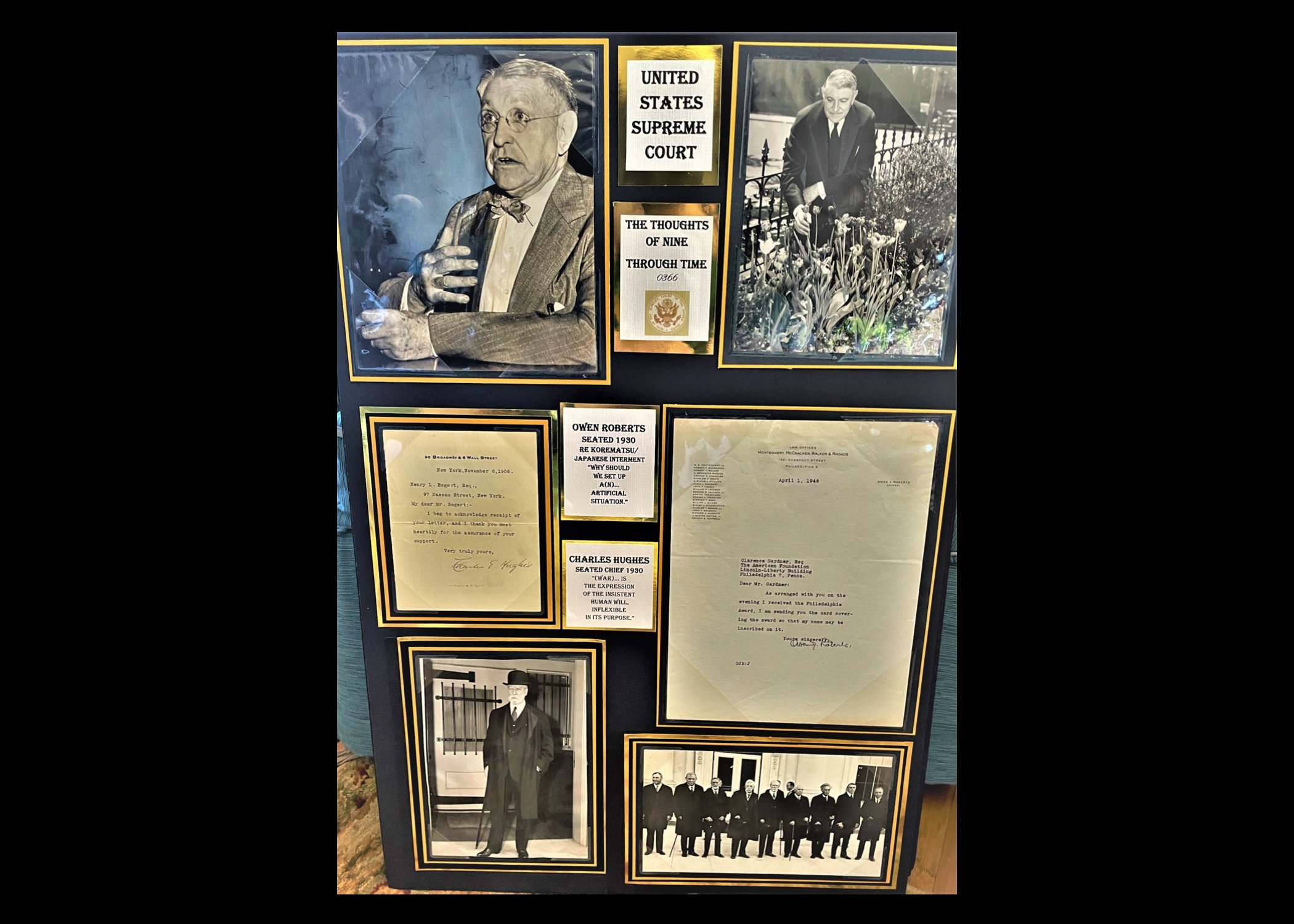
Justice Owen J. Roberts #74 (1875-1955), Benjamin N. Cardozo #75 (1870-1938)
Justice Owen J. Roberts #74 (1875-1955), Benjamin N. Cardozo #75 (1870-1938) Montage.

Roberts, Chief Stone, Devanter & Brandeis
In alphabetical order the selected justices present an unusual picture but together one of bravery and with a desire to get it right within the meaning of each of their interpretations of the constitution. Louis Brandeis #67 and his texts provide the greatest insight to social justice and freedom of speech ever written. Willis Van Devanter #63 provides insight into what drives a simple man to endure years of conflict just to defend a document also written by just men. Owen Roberts #74 endured the “new deal” until he saw that in continuing to do so the very composition of the court could be compromised…in time he switched his vote. Harlan Stone #73 maintained balance with restraint and proved patience always prevails. These 4 men have pictures. Can you identify them in the cartoon by sue? If you can’t begin to read


Owen Roberts #74 (1875-1955)
Owen Roberts #74 (1875-1955) accepted a Justices prerogative. He changed a vote that had far reaching implications. Roberts was nominated by Herbert Hoover so Roberts aversion to the “new deal” proposed by President Roosevelt was perhaps a knee-jerk reaction. Roosevelt thought the Supreme Court was old and needed help to render decisions so he suggested expanding the size of the Court.

Justice Charles Evans Hughes #62 & Justice Owen Roberts #74
This board presents two men both of whom are Associate Justices. It also includes two letters one signed by Associate Justice Charles Evans Hughes #62 in November, 1906 four years before he us nominated to the Supreme Court by President Taft as an Associate Justice.
The other letter is written by Justice Owen Roberts #74 on stationary of Montgomery , McCracken, Walker, and Rhoads a Law Firm in Philadelphia on April 1, 1946, a year after he resigned from the United States Supreme Court.